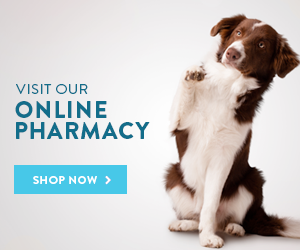Yeast Skin Infection
Malassezia Dermatitis (Yeast Infection of the Skin)
Yeasts are the spore-like forms of fungi; Malassezia dermatitis is a fungal infection of the skin.
Why Suspect Yeast?
Yeast infections are itchy, crusty, and smelly. Often a dog starts out with a rash or with simple itching, but the skin thickens to an elephant skin appearance. The itch is extreme and the odor can be especially troublesome. Parts of the body or the entire body can be affected. Mostly dogs are affected but cats can get yeast infections as well. A telltale sign is brown staining nails or hair.
Yeast appear as budding (foot-print) organisms.

Where Would a Dog Get a Yeast Infection?
Yeast happily live on most normal skin and in ears and anal glands. To get a yeast infection, conditions on the skin surface have to change to favor the proliferation of the yeasts. The yeasts in small normal numbers are harmless but when the yeasts are present in large numbers, disease results.
What Conditions Lead to a Yeast Proliferation?
An increase in skin oils (which often occurs in an allergic flare up) would be the most common situation. Sometimes there is an immune deficiency that allows the yeast proliferation. Some animals are battling seborrhea (excessive oil production of the skin) and thus are naturally predisposed to the yeast proliferation. Some animals are actually allergic to the yeasts themselves. The most important thing to realize is that while a yeast infection is not contagious, it tends to recur unless the underlying allergy, seborrhea, or other problem is controlled.
The following breeds are predisposed genetically to yeast infections: the West Highland White Terrier, Basset hound, Cocker Spaniel, Silky terrier, Australian Terrier, Maltese, Chihuahua, Poodle, Shetland Sheepdog, Lhasa Apso, and the Dachshund.
How is Yeast Confirmed?
There are several testing methods to confirm the overgrowth of yeasts:
- Impression smear (pressing a microscope slide on the skin to collect yeast organisms)
- Scotch tape sampling (pressing a piece of clear tape to the skin to collect yeast organisms)
- Skin scraping with a blade (scraping the skin with a blade to collect yeast organisms)
- Cotton swab (rubbing a moistened cotton swab on the skin to collect yeast organisms)
- Skin biopsy (removing a small plug of skin with a biopsy punch with a local anesthetic. This is the most invasive choice but provides substantially more diagnostic information.)
Very few yeasts need to be seen under the microscope to confirm yeast infection.
How can Yeast be Removed?
Treatment can be topical, oral, or both. Topical treatment is best used for localized spots of infection while oral medication would be better applied to larger infected areas. If the yeast infection is recurrent or if you wish to supplement oral medication, topical and oral treatment can be combined.
Oral therapy
Ketoconazole, Fluconazole and Terbinafine are prescribed for oral therapy. Typically a four week treatment is needed and there are numerous protocols involving different dosing schedules. Higher doses tend to be needed if recurrence is a problem. The extreme itch usually resolves within one week. Itraconazole, a similar but somewhat newer drug, is sometimes used for more resistant yeast infections.
Shampoos
While degreasing shampoos such as the benzoyl peroxide (OxyDex, Pyoben) and sulfur/salicylate (SebaLyt, Sebolux) shampoos will help remove the skin oils feeding the yeast, there are shampoos that are specifically anti-yeast. Some 4% chlorhexidine shampoos called ChlorhexiDerm Max, Sebahex or Malaseb shampoo strip skin oil and kill yeast; however, other anti-yeast products include Selsun Blue, Miconazole shampoo, Nizoral shampoo, Douxo shampoo and more. The pet must be bathed twice a week to start and the shampoo requires a 15 minute contact time (meaning do not rinse the lather for 15 minutes).
Spot (topical) Treatments
If only a small area is involved, it is probably not necessary to bathe the entire animal. Special acetic acid wipes can be used to cleanse the affected area. Mixtures of vinegar and water (50:50) can be used but the pet will develop a distinct vinegar odor. A newer product called Douxo made by Sogeval is available as a spot-on, topical liquid, or spray. Topical powders (corn starch, Lotrimin, etc.) are applied in skin folds (paws, tail, neck, under-arms/legs) at night to reduce moisture and itch. Topical antibiotic/antifungal ointments are used in the ears, lower lips and nail beds as needed.
Treatment of the Underlying Cause
It is important to realize that yeast overgrowth occurs in response to a primary problem be it allergy, seborrhea or something else. If the underlying problem is not controlled, yeast dermatitis is likely to periodically recur. It is common for allergic dogs to require some kind of periodic if not on-going anti-yeast therapy.

